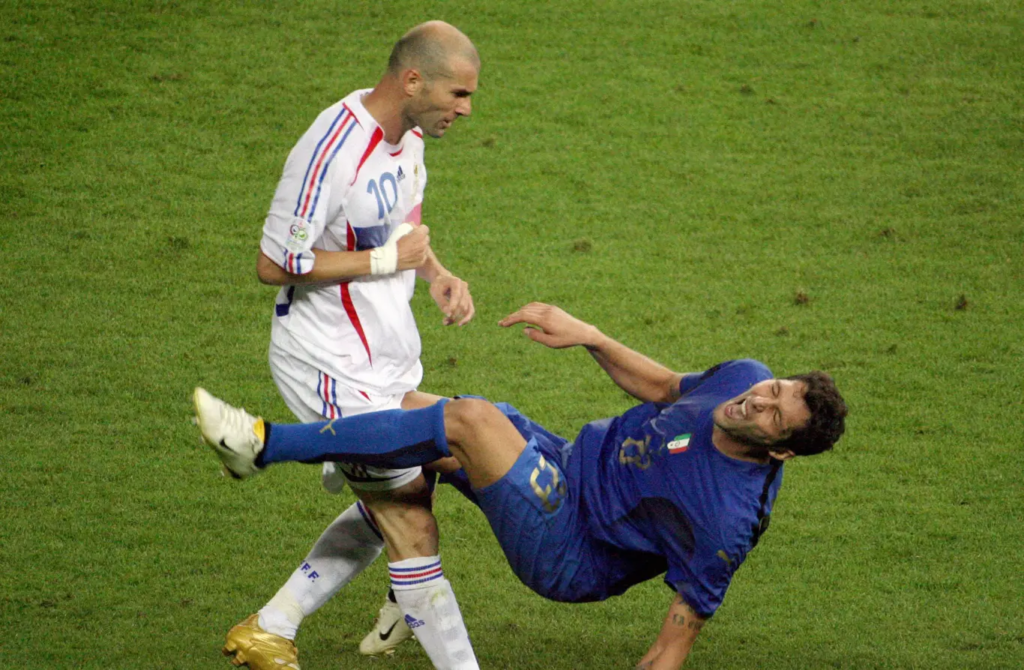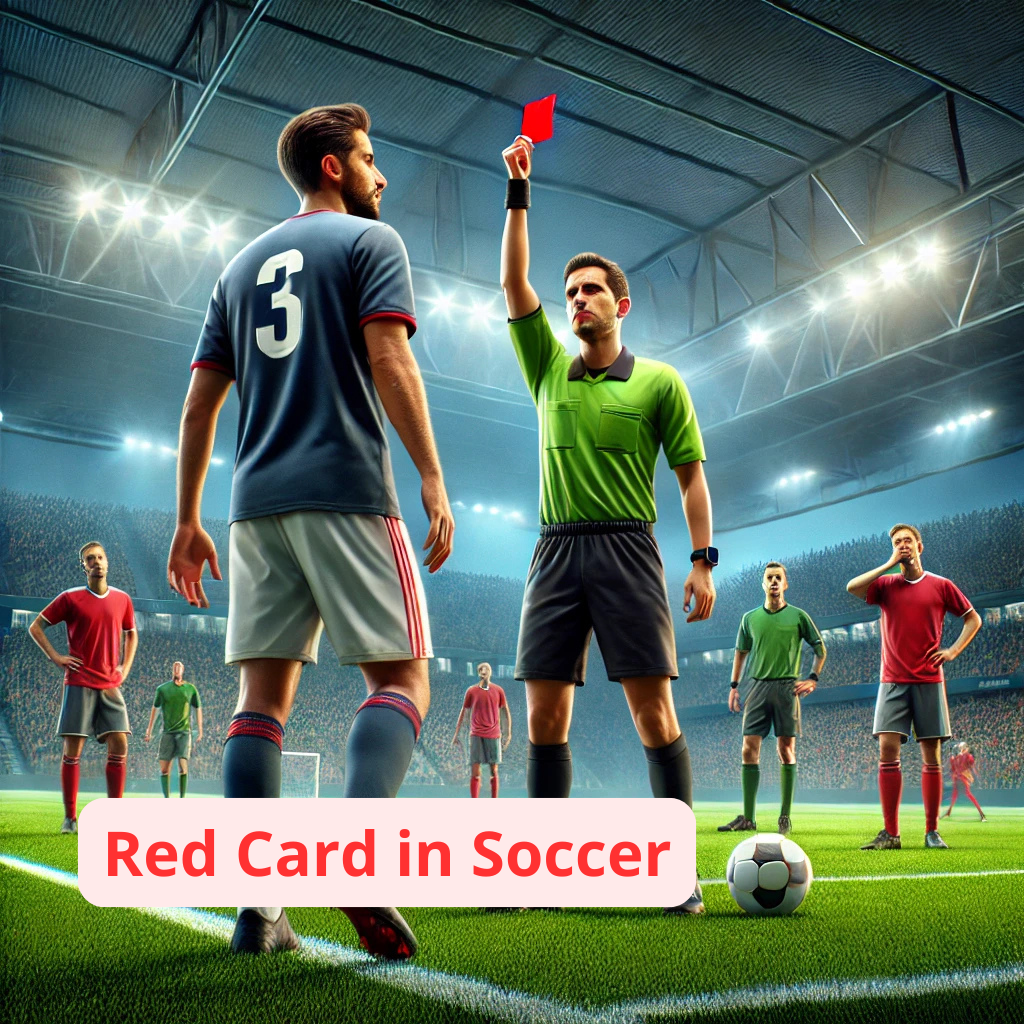Soccer, known as football in many parts of the world, is governed by a set of rules that ensure fair play and maintain the integrity of the game. Among these rules, the red card stands out as one of the most significant disciplinary actions a player can receive.
Understanding red card soccer is essential for players, coaches, and fans alike, as it directly influences the dynamics of a match. This comprehensive guide explores what a red card means in soccer, the rules surrounding it, the consequences for players, and some of the most memorable red card moments in the sport’s history.
What is a Red Card in Soccer?
A red card in soccer is a disciplinary measure issued by the referee to a player who has committed a serious offense during a match. When a player receives a red card, they are immediately sent off the field and cannot participate in the remainder of the game. The team must continue the match with one fewer player, which can significantly impact the game’s outcome.
Meaning of a Red Card
The red card symbolizes the referee’s decision to penalize a player for violating the game’s rules severely. Unlike a yellow card, which serves as a caution, a red card results in an immediate ejection from the match.
Red Card Rules in Soccer
Understanding the red card soccer rules is crucial for players and fans to comprehend the game’s disciplinary framework. According to the FIFA Laws of the Game, a player can receive a red card for the following offenses:
- Serious Foul Play: Any act of violence or brutality against an opponent.
- Violent Conduct: Actions that are violent or pose a threat, even outside active play.
- Spitting at an Opponent or Any Other Person: Considered highly unsportsmanlike and unsanitary.
- Denying an Obvious Goal-Scoring Opportunity: Using hands or deliberate fouls to prevent a goal.
- Using Offensive, Insulting, or Abusive Language and/or Gestures: Directed at opponents, officials, or spectators.
- Receiving a Second Yellow Card in the Same Match: Accumulating two cautions leads to a red card.
What Does a Red Card Mean in Soccer?
Receiving a red card means the player must leave the field immediately, and their team plays with one fewer player for the rest of the match. Additionally, the player is usually suspended for the next game, depending on the league’s regulations.
Click on the image below to find yourself something comfy when you are off the field.
Consequences of Receiving a Red Card
The red card consequences in soccer extend beyond just being sent off the field. Here’s what happens when a player receives a red card:
- Immediate Ejection: The player must leave the field of play and cannot be replaced, leaving the team with fewer players.
- Suspension: Typically, the player is suspended for at least the next match. The suspension duration can increase based on the severity of the offense.
- Fines: Depending on the league and the nature of the foul, the player may incur financial penalties.
- Reputation Impact: Frequent red cards can tarnish a player’s reputation, affecting their career and relationship with fans and teammates.
Can a Player Play the Next Game After a Red Card?
One of the most common questions is: “If a player gets a red card, can they play the next game?” The answer is generally no. When a player receives a red card, they are typically suspended for the following match. The suspension period can vary:
- Standard Offenses: Usually result in a one-match suspension.
- Serious Offenses: Can lead to multiple-game suspensions.
- Repeat Offenders: Players who accumulate multiple red cards may face longer suspensions and more severe penalties.
The specific rules can vary depending on the league and governing body, so it’s essential to refer to the relevant regulations for precise information.
Famous Red Card Incidents in Soccer
Red cards can be pivotal moments in soccer matches, often altering the game’s outcome. Here are some of the most memorable red card incidents:
1. Zinedine Zidane – 2006 FIFA World Cup Final

In the 2006 World Cup final between France and Italy, French legend Zinedine Zidane received a red card for headbutting Italy’s Marco Materazzi in extra time. This incident not only overshadowed Zidane’s illustrious career but also contributed to France’s eventual loss in the penalty shootout.
2. Gonzalo Higuaín – Multiple Red Cards

Argentinian striker Gonzalo Higuaín has been sent off several times throughout his career for various offenses, including violent conduct and denying goal-scoring opportunities. His aggressive play style has made him a frequent recipient of red cards.
3. Samuel Eto’o – 2010 FIFA World Cup

Cameroon’s Samuel Eto’o was sent off in a crucial match against the Netherlands in the 2010 World Cup for handball. The red card played a significant role in Cameroon’s exit from the tournament.
4. Sergio Ramos – UEFA Champions League

Real Madrid’s Sergio Ramos is known for his aggressive defense and has accumulated numerous red cards, including a high-profile one during a UEFA Champions League match, which impacted his team’s performance.
How to Avoid Getting a Red Card
Preventing red cards involves understanding the rules and maintaining composure on the field. Here are some tips to help players avoid receiving a red card:
- Stay Composed: Avoid aggressive behavior and maintain professionalism, even in heated moments.
- Understand the Rules: Familiarize yourself with what constitutes serious foul play, violent conduct, and other red card offenses.
- Good Sportsmanship: Respect opponents, referees, and the spirit of the game.
- Proper Tackling Techniques: Use correct tackling methods to avoid committing fouls that could lead to red cards.
- Manage Emotions: Control anger and frustration to prevent impulsive actions that could result in penalties.
Frequently Asked Questions (FAQ)
Can a player return to the game after receiving a red card?
No, once a player is shown a red card, they must leave the field and cannot return to the match.
How long does a red card suspension last?
The suspension usually lasts for at least one match, but it can be longer depending on the severity of the offense and the league’s regulations.
What happens when a player gets two yellow cards in one game?
Receiving two yellow cards in the same match results in an automatic red card and ejection from the game.
Do coaches receive red cards in soccer?
Yes, coaches can receive red cards for misconduct, such as dissent or unsportsmanlike behavior towards referees or opponents.
Are there differences in red card rules across different leagues?
While the core rules are consistent, some leagues may have variations in suspension lengths or additional penalties for certain offenses.
Can a red card be appealed or overturned?
In some cases, disciplinary committees can review and overturn red cards if evidence shows that the decision was incorrect or unjust.
Conclusion
Understanding red card soccer is fundamental for anyone involved in or passionate about the sport. Red cards play a crucial role in maintaining discipline and fairness on the field, ensuring that players adhere to the game’s spirit and rules. By knowing the circumstances that lead to a red card, the consequences that follow, and how to avoid such penalties, players can contribute positively to their teams and the sport’s integrity.
Additionally, memorable red card incidents serve as important lessons and reminders of the game’s emotional and competitive nature. Whether you’re a player aiming to maintain clean play or a fan eager to comprehend match dynamics better, grasping the significance of red cards enhances your overall soccer experience.

